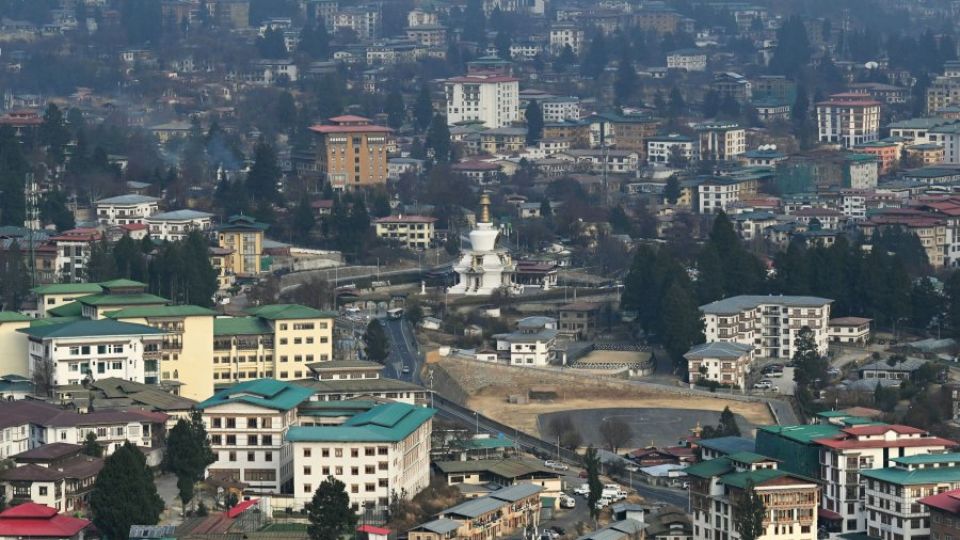February 24, 2025
THIMPHU – Bhutan launched a USD 20 million project to boost climate resilience in Thimphu and Paro on February 19.
The six-year initiative “Enhancing Climate Resilience of the Urban Landscapes and Communities in Thimphu-Paro Region of Bhutan (ECRUL)” will build climate resilience of over 146,000 residents of Thimphu and Paro Dzongkhags.
The Global Environment Facility (GEF) Least Developed Countries Fund is providing USD 20 million for the project. The Ministry of Infrastructure and Transport will implement the project in partnership with the United Nations Development Programme (UNDP).
Thimphu and Paro face increasing threats of flooding, primarily due to riverine (fluvial) and surface water (pluvial) flooding during the monsoon. The region is also vulnerable to cyclones from the Bay of Bengal, which occur before and after the monsoon.
The ECRUL report projects that by 2050, Bhutan’s GDP could decline by 1.4 percent due to average economic harm caused by climate change.
The State of Climate in Asia Report 2023 ranks Bhutan 38th among countries most vulnerable to climate change but 62nd in preparedness.
The UL project is designed to address multiple climate risks, including riverine and surface water flooding, water stress, landslides, forest fires, and cyclone events originating from the Bay of Bengal.
Despite the abundant water resources in the country, urban areas like Thimphu and Paro face drinking water shortages, caused by seasonal variations, quality issues, and uneven distribution. Rapid urbanisation and population growth have further compounded these challenges, disproportionately affecting women and vulnerable populations.
Existing urban infrastructure is not equipped to withstand climate shocks, making Thimphu and Paro particularly susceptible to disasters.
The project will deploy Nature-based Solutions (NbS) and climate-resilient infrastructure to enhance urban resilience. Some of the key measures include managing watersheds and springs, enhancing river corridors with urban forestry, creating retention ponds, rain gardens, and urban wetlands, and improving stormwater drainage.
To strengthen institutional coordination, the project will establish a climate resilience strategy under the Royal Commission for Urban Development. This will harmonise inter-agency mandates and enhance collaboration.
A climate-resilient, gender-responsive adaptation plan will be developed, incorporating citizen input and promoting climate-resilient entrepreneurship.
The project will invest in data-driven decision-making by developing a climate and geospatial information system, with sex-disaggregated data accessible to both central and local governments.
In addition, the project will also introduce educational programmes in colleges and technical schools for skilling, reskilling, and upskilling planning professionals and the workforce.
The Department of Workforce Planning and Skills Development will conduct an analysis of past and ongoing programmes to identify areas for integrating content related to urban resilience.
The projects will also identify innovative financing solutions to encourage public and private sector investment in relevant projects.
To protect urban infrastructure from extreme weather, the project will implement climate-proofing water and stormwater systems and advanced early warning systems for floods, landslides, and other hazards.
Innovative technologies like geographic information systems, Internet of Things, and supervisory control and data acquisition will be used for data analysis to support informed decision-making.
The project will engage women, youth, the elderly, and persons with disabilities in climate-adaptive urban planning.
To ensure the project’s long-term success and potential for wider application, the project prioritises knowledge management, communication, and thorough monitoring and evaluation.
A catalogue of NbS for will be developed, tailored for mountainous cities, including a strategy for engaging local entrepreneurs in adaptation planning.
The project also plans to document traditional knowledge for urban resilience, green building tools, gender and climate change, NbS for resource management and NbS entrepreneurship.
According to the project report, integrating NbS and green infrastructure is a cost-effective strategy that offers multiple benefits, including reducing climate risks, enhancing biodiversity, and improving overall quality of life.
“When implemented strategically, these solutions can reduce the need for costly engineered interventions over time, promoting sustainable and cost-efficient resilience,” states the report.


